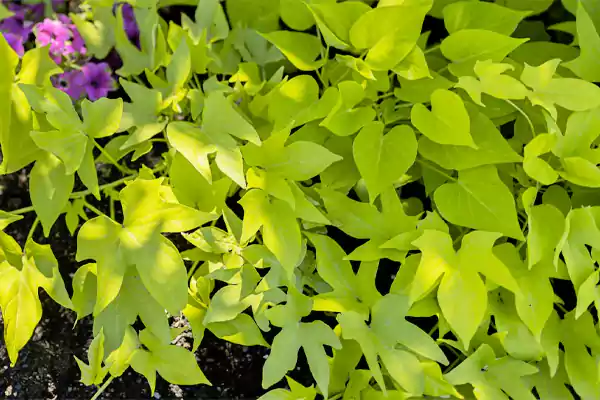
The Sweet Potato vine is more than just a beautiful trailing plant. It is a vibrant, fast-growing, and versatile addition to both your indoor and outdoor spaces, or for your balcony garden. The species is mostly loved for its heart-shaped leaves, stunning colors, and is widely appreciated among gardeners and home decor enthusiasts.
Whether the plant is hanging down from a basket or simply sprawling across a garden bed, Sweet Potato vines make sure to bring instant charm and a tropical feel.
Moreover, since the plant is an easy-to-grow species and simple to propagate, it is no wonder that it is an ideal choice for novice plant lovers. In this article, let’s explore everything you need to know about this fascinating and functional plant.
What is a Sweet Potato Vine?
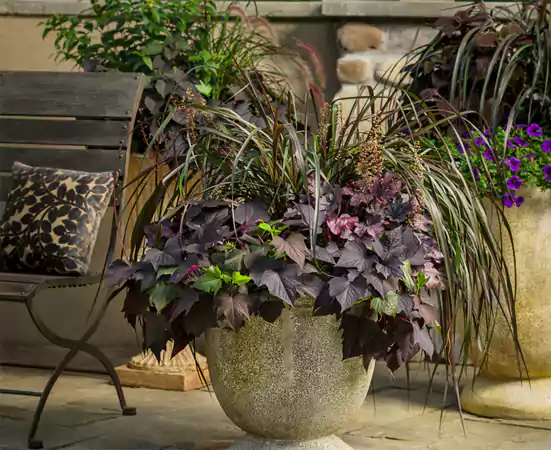
Sweet Potato vine, botanically called Ipomoea batatas, is a tender perennial native to tropical regions of the Americas. It belongs to the Morning Glory family and is widely appreciated for its distinct leaves, which come in different color ranges from lemon green to deep purple.
Key Takeaways
- Botanical Name — Ipomoea batatas
- Common Name — Sweet Potato Vine
- Plant Type — Ornamental Vine
- Growth Habit — Trailing or Sprawling
- Hardiness Zones — 9-11 USDA
- Toxicity — Non-Toxic, but can cause mild indigestion
These vines thrive in warm climates, love sunlight, and grow rapidly, creating a lush, tropical look with very little effort. In short, if you are looking for smart ways to elevate your home garden, this stylish relative of the sweet potato is ideal for adding color, drama, and texture.
Types and Varieties of Sweet Potato Vine Plant
If you are a garden enthusiast, you might be aware of the alluring varieties of the Sweet Potato Vine flowers. One cannot deny the fact that each cultivar comes with its own charm. Given below is a list of some popular varieties you will commonly find in nurseries and gardens.
| Cultivar Name | Image | Leaf Color and Usage |
| Marguerite Sweet Potato Vine | 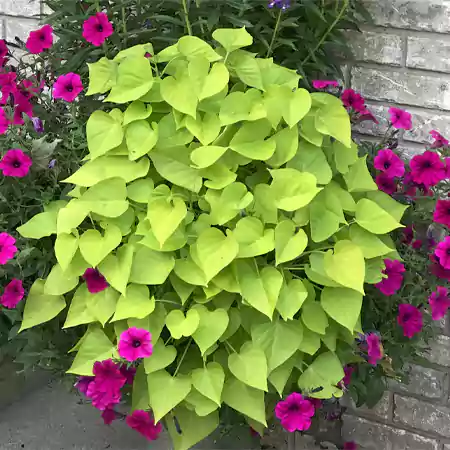 | Bright lime green leaves, best used to cover garden corners. |
| Blackie Sweet Potato Vine | 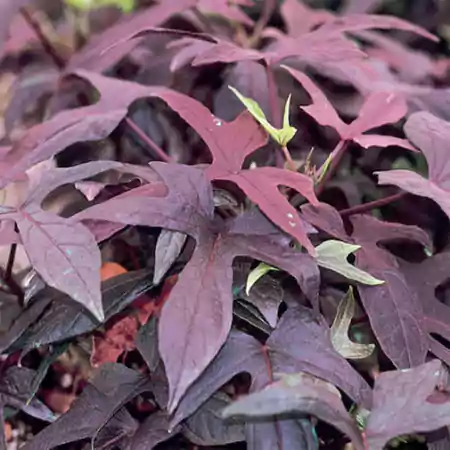 | Deep purple black leaves, mostly used to create contrast in the garden area. |
| Sweet Caroline Raven | 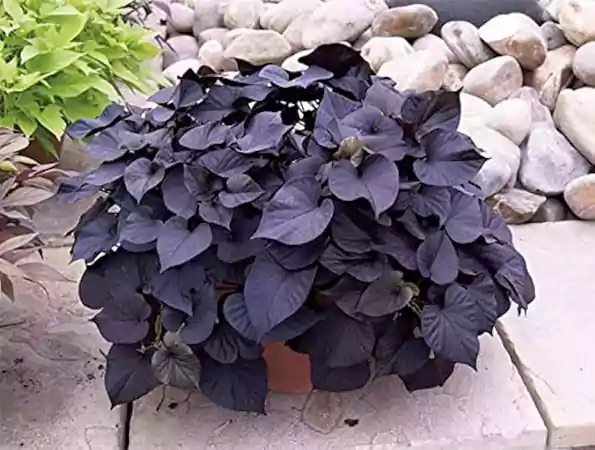 | Jet black leaves, usually planted in hanging baskets or as a container plant. |
| Illusion Emerald Lace | 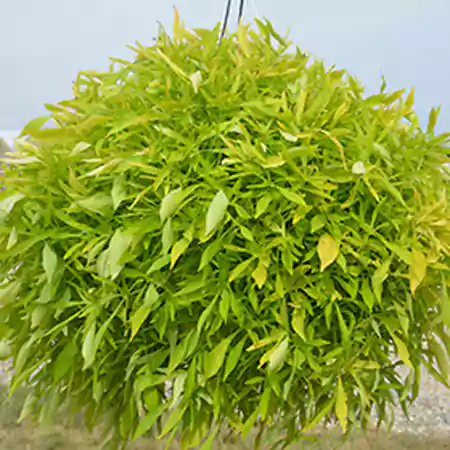 | It has green and yellow foliage, mostly used for border planting or to decorate the edges of the landscape. |
| Tricolor | 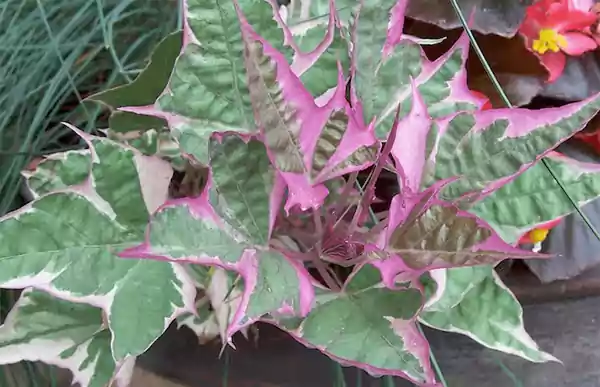 | Green, pink, and white leaves, typically planted in pastel theme gardens. |
Each variety of the Sweet Potato genus carries its own personality. Some vines grow longer than others, while others stay compact. Whether you wish to have a bold color pop in your backyard or simply want to add a soft trailing vine, there is a plant right for your space.
Benefits of Growing the Ornamental Sweet Potato Vine
Apart from being visually appealing, there are practical reasons to add this plant. If you’re wondering why it deserves a place in your home or garden, here are a few great reasons.
- Easy to Grow: Even beginners find it simple to care for.
- Fast Growth: It fills up space quickly, making it perfect for covering empty patches.
- Low Maintenance: Just regular watering and sunlight, and you are good to go.
- Work Anywhere: Great for pots, hanging baskets, or garden beds.
- Air Purifier: Helps clean the air when grown indoors.
Whether you wish to brighten a corner or cover a plain wall, Sweet Potato vines get the job done effortlessly while adding natural charm.
How to Grow Sweet Potato Vine: Soil, Light, and Watering
If you wish to have a flourishing sweet potato plant, giving it the right growing conditions is very necessary. Here’s what it needs to stay happy and thrive even better.
| Sunlight Exposure | Needs a minimum of 4–6 hours to grow well; it can also thrive in partial shade. |
| Water Requirement | Regular watering is needed during the initial growing stages. Once fully grown, water when the top inch of the soil feels dry. |
| Soil Type | Prefers growing in well-draining, fertile soil. |
| Climate | Warm weather (15–30 °C is ideal) |
| Fertilizer | Try spraying liquid fertilizer once every 2–4 weeks. |
With just the right balance of soil, sun, and water, your sweet potato vine will reward you with vibrant growth and rich colors all season.
Indoor vs. Outdoor Care of the Purple Sweet Potato Vine Plant
If you plan to add an indoor vine plant or simply wish to enhance the aesthetics of your front lawn, each space has its own unique care needs. Here is a quick guide for both.
| Care Area | Indoors | Outdoor |
| Light | Bright, indirect sunlight | Full sun or partial shade |
| Watering | Only when the soil feels dry | Frequent watering is needed in summer. |
| Pot Type | Use well-draining containers | It can be grown directly in the ground. |
| Temperature | Keep away from cold drafts | Avoid frost exposure |
- Indoor Tip: Rotate the pot weekly to ensure even growth.
- Outdoor Tip: Use mulch to lock in moisture during heat.
No matter where you grow it, the sweet potato vine adjusts beautifully as long as you give it a little attention and love.
Common Issues and How to Solve Them
Like any other plant, the Purple Sweet Potato vine might also run into small issues. Some of the common issues that the genus usually faces have been listed below, along with the solution to cure them.
- Yellow Leaves: Usually caused due to overwatering. Adjust the frequency and improve the drainage of the soil or pot.
- Wilting: If you notice the soil getting dry too soon, it probably needs more water. Try placing the plant in areas having filtered sunlight.
- Pests: The leaves of the decorative Sweet Potato Vine may get sticky, and bugs like aphids might be visible. Use neem spray or insecticidal soap for treatment.
- Slow or Stunted Growth: Can be due to poor soil conditions or lack of light. Place the container in a space where it can get abundant sunlight, and make sure to fertilize it once in 2 weeks.
Regular checking can help you catch these issues at an early stage, so you don’t have to deal with a bigger problem later. Don’t worry if your plant looks a little off. With quick action and simple fixes, it’ll bounce back stronger and greener than ever.
Decorative and Culinary Uses of the Sweet Potato Vine Flower
This plant is a star when it comes to decoration, and some types even offer edible parts. Let us look at how it can serve both beauty and function.
| Decorative Uses: Can be used as a hanging planter, to decorate vertical walls, for balcony railings, and as ground covers for flower beds. The pale pink to violet flowers can be incorporated into small bouquets or used as delicate garnishes for larger arrangements. |
| Edible Uses: Only edible varieties are good for cooking. Leaves of some cultivars can be sautéed to make stuffing or salads. Although the tubers of ornamental sweet potato vines are edible, they are not typically consumed due to their bitter taste. |
While most people grow them for their looks, it’s nice to know this plant has a practical side too. This beneficial aspect of the plant is often neglected to its eye-catching element.
Final Thoughts
The Sweet Potato Vine proves that simple plants can make a big difference. With their bright leaves, easy care, and trailing elegance, they are a top pick among gardeners and decor lovers alike. Whether the genus has bold black leaves or soft lime green hearts, these vines can bring life to any space.
In a nutshell, the species is beautiful, easy to care for, and versatile. If you’re looking for a plant that offers vibrant colors and grows with minimal effort, this one’s for you. Go ahead and bring this green companion to your garden space and watch it peacefully grow.
Do Sweet Potato Vines like sun or shade?
The Sweet Potato Vine prefers growing in bright indirect sunlight. It needs 4–6 hours of direct exposure, but can also thrive in shady areas.
Does Sweet Potato Vine actually grow sweet potatoes?
Yes, the genus can grow small tubers, but only ornamental varieties. Some of these also produce edible ones, but they are usually bitter and cannot be consumed.
Is a Sweet Potato Vine a perennial or annual?
One can say the genus is a mix of both. Being a perennial, it can be grown in warm climates, but as an annual species, it may be affected by extreme frost.
What is the botanical name of the Sweet Potato Vine Flower?
The botanical name of the sweet potato vine is Ipomoea batatas.
- Ipomoea batatas — NC State Extension Research Paper
- Sweet Potatoes, a Winning Vine for Your Garden — Penn State Extension
